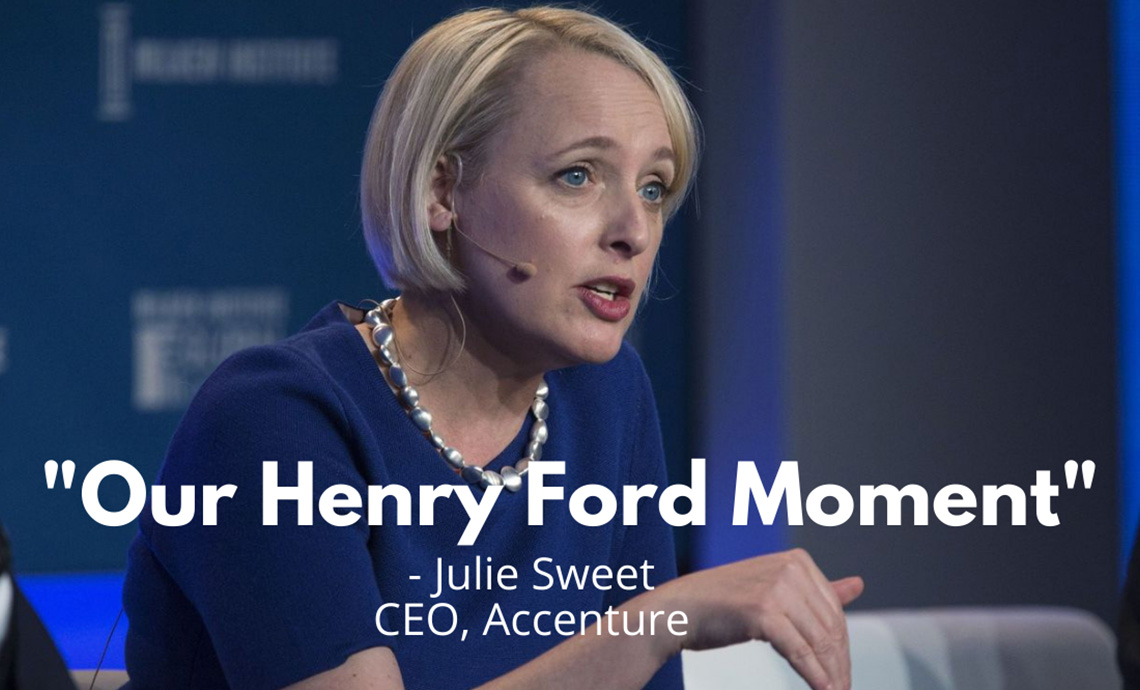A data culture has many benefits, and though the actual development of one looks different in every organization, all successful cultures share core values and beliefs about the role of data. While culture develops organically, there are certain conditions that encourage growth. Whether you still rely heavily on gut instinct or you’re further along in the process of using data, you probably have room for cultivation and maintenance.
We know that a data culture doesn’t form on its own, so what are some tangible ways to help one take root and grow? Here are steps you can take to foster it in your organization:
Identify a data champion
If certain conditions are required for growth, someone must take initiative to create those. Identify an individual who can lead the charge for fostering data usage and advocating for organizational buy-in. If possible, this person should be an executive that can encourage top down and bottom up adoption of data informed decision-making. The ideal data champion is an evangelist on the power of data, is friendly and communicates well with others, and thinks outside of the box.
Get organizational buy-in
Your organization’s leaders must be on board with data informed decision-making. And why wouldn’t they be? A data culture replaces time-consuming processes with efficiency, reduces resource bottlenecks, and optimizes organizational growth.
To be clear, organizational buy-in is more than a casual “thumbs up.” It’s a commitment to value data over gut instinct, accompanied by the willingness to act upon insight. Organizational buy-in requires investing appropriately, both in time and money. While it’s natural to wish for all results immediately, a data culture isn’t like that. Incorporating data into everyday decision-making requires some upfront investment with the understanding and expectation that the full ROI takes time.
That’s not to say you should map out your organization’s entire data journey before it even starts. The leading cause of failed data analytics initiatives is over planning at the onset of a project, which results in unfinished projects, blown budgets, and waning organizational momentum. Data is fluid, and so is the process of incorporating it into your strategy. By starting small and affordably, your organization can see immediate value that will increase your foundational business knowledge, thereby equipping you with exploratory questions that you may have never otherwise asked.
Develop a plan
What data does your team need to access and how should they get it? Planning your strategy, selecting tools, considering data lake vs. data warehouse, establishing processes to support data culture, and evaluating resources that will support you are critical in this phase. A few specific considerations to take into account are:
- Communicating strategy. Your entire team will be involved in forming a data culture, so consider how you’ll communicate changes, how they will impact your team, and set clear expectations on participation. Maintain open communication as you implement and tweak your plan. Before you start, think about any areas that may cause friction within your organization and develop a plan to circumvent it. Data brings the opportunity to unite teams that face collaboration challenges because it encourages a common goal.
- Setting goals. Determine your top organizational goals and establish metrics to measure them. Once finalized, benchmark your current metrics and set goals for improvement. Create a strategy to reach your goals and assign the campaigns and tactics to appropriate teams with a clear explanation of how each goal ties directly back to the organization’s success.
- Reworking processes. A data culture will change processes within an organization. For example, your current meetings may not require data presentation in order to make decisions. Using data at every meeting won’t happen overnight, but you can begin the process of incorporating data by picking one initiative at a time. Once your team sees success using data effectively, you can begin to integrate data into more facets of your decision-making process.
- Addressing unclean data. Most, if not all, organizations face challenges with unclean data. Rather than cleaning everything before importing it into the data analytics platform, which can be an enormous level of effort, get started with what you have and continually improve. After all, incorporating (and improving) data is a fluid process.
Adopt data in your processes
As everyone becomes educated on using and interpreting data, there are a few other challenges to address in organization-wide adoption:
- Educating your team. It’s essential to account for how your staff will access data and ensure that they are familiar and comfortable doing so. This training extends beyond specific tools and ensures that your team has the professional development and skillset necessary to accurately interpret data and take appropriate action.
- Choosing tool(s). Select data analytics tool(s) that are intuitive enough for everyday business users, but sophisticated enough to deliver impactful insight and answer complex queries.
- Celebrating successes. Data can be daunting, so starting small and celebrating each success is important. For example, if you previously created weekly reports to highlight conference registration, you can easily calculate how many hours were saved by transitioning to an automated report. Without even taking action on the insight it produces, the amount of time (and money) saved with the automated report is already a success worth celebrating.
It’s worth noting that this list of ways to create a data culture does not include data perfection and process establishment at the onset. Keep in mind that you’re aiming for improvement, not perfection.
As you master small successes, you’ll transition from data as commonplace at an operational level to embedding it into every process. You’ll begin experiencing the benefits: clarity of organizational purpose, single source of truth, power to the people, and more competent teams. Nurture your data adoption by setting and tracking specific and meaningful goals that will drive organizational growth. This will require strong cross functional collaboration that’s possible with a mature data culture.


